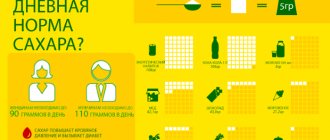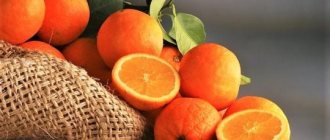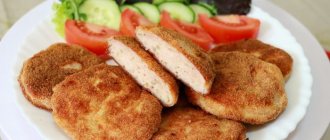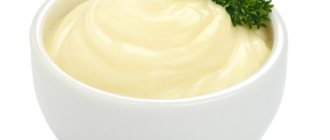The average resident of Japan (the country where instant noodles were invented) eats about 40 servings of “doshirak” per year, that is, 1 pack approximately once a week. How often do you do this? And how often can you actually add Doshirak or Rollton to your diet? To answer the last question, we have written this article for you. At the same time we figured it out ourselves.
Momofuku Ando, Japanese inventor and businessman who invented instant noodles.
Light mission of fast noodles
The idea to create instant noodles came to the bright mind of the Japanese inventor and businessman Momofuku Ando in 1958 - during the period when, after the war, there was a food shortage in Japan and the need for carbohydrates was covered from large reserves of wheat flour. The Japanese, who were in love with rice and rice noodles, were offered to switch to bread. But he was alien to the Asians, and this situation gave them little joy.
Momofuku was a smart man: he thought that wheat flour could also be used to make noodles. And then I decided that it would be nice if such noodles could be cooked quickly.
No, not fast. Very fast!
This is how noodles appeared, which in Russia are most often called the generic words “doshirak” and “rollton” (although in fact these are brand names).
The first batches of boxed noodles were 6 times more expensive than regular noodles, which need to be boiled, but this did not stop the new product from winning first the love of the Japanese, then the people of Asia, and then the whole world.
Myths and truth about the noodle diet
Opinion 1. Noodles contain harmful components because they quickly boil under the influence of boiling water.
The version is fictional, since instant noodles are most often prepared from regular wheat flour. The dough swells quickly due to its pre-steaming and frying. Thanks to this, the product does not require long-term heat treatment.
Opinion 2. Excessive amounts of noodles eaten have a bad effect on your figure.
The statement can be considered true, since all fast food products are considered high in calories. Spices and salts included in the dish slow down the digestion process and the removal of water from the body.
Opinion 3. If a dish contains E additives, then it is considered harmful.
It is a myth. Sometimes component E hides completely harmless ingredients: E160 - beta-carotene, E440 - pectin, E101 - riboflavin or vitamin B. Each of these microelements is necessary for the full functioning of the body.
Opinion 4: Monosodium glutamate is addictive.
An opinion can be classified as both myth and truth. The fact is that the substance does not form the same addiction as drugs and alcohol. It gives dishes a more savory taste, which is why natural foods are no longer enjoyed as much as before.
Five benefits of instant noodles
Humanity’s love for doshiraki is based on five advantages of this food: price, taste, satiety, availability and speed of preparation.
- Cheap.
It was only at first that instant noodles were significantly more expensive than regular food. Very soon, manufacturers managed to significantly reduce the price of this product, and today ramen is the most affordable dish.
- Tasty.
Noodle manufacturers know how to attract and retain customers. To make sure we enjoy the dish, they add a packet of seasonings to each packet.
- Nourishing.
The caloric content of noodles varies on average from 350 to 450 kcal per 100 g, and it is indeed a very filling lunch with a lot of carbohydrates.
- Available.
All over the world, a bag of custard noodles can be bought at almost any retail outlet where food is sold.
- Fast.
Five minutes - and the food is ready. This scenario is very important for many people.
4. Quick noodles can have unexpected flavors
The flavor palette of noodles on the Russian market is limited to the most common types of meat and mushrooms. But abroad they approach the production of this product creatively. Thus, in Japan, instant noodles are sold with the flavor of Pringles chips with jalapeno and onion and sour cream and onion. Chip manufacturers also did not stand aside and released a batch with the taste of instant noodles.
By the way, if you wander around the Internet, you can find interesting recipes with Doshirak. For example, noodles can be added to salads, pizza and even burgers.
Four disadvantages of instant noodles
No matter how much we like boxed noodles, we shouldn’t make them a regular guest on the table. There are a number of reasons for this.
- Lack of beneficial nutrients.
This is perhaps the most serious disadvantage of the product. Instant noodles have an extremely meager supply of vitamins, minerals, proteins and fiber, and the carbohydrates included in their composition can hardly be called ideal, because they are obtained from refined wheat flour.
- Dubious fats.
In most cases, noodles are prepared with the addition of vegetable fats (most often palm oil), which are not beneficial to our body.
- Excess salt, spices and flavorings.
Everything that makes noodles so delicious can also negatively affect our health. Foods high in salt put us at risk of stomach cancer and problems with the heart and blood vessels. Regularly consuming large amounts of salt can increase blood pressure and harm your kidneys. Hot spices should be used with caution by people who have a tendency to diseases of the gastrointestinal tract.
- High calorie content.
If you count your calories and keep track of your dietary fat, you will have to think carefully about how to balance the one-time consumption of about 400 kcal, which are mostly represented by carbohydrates alone.
The dangers of a quick snack
A quick snack includes not only instant noodles, but also mashed potatoes, muesli, and instant cereals.
The main danger of this type of snack is its chemical composition. For example, purees contain various flavors, flavorings and dyes. It is not profitable for manufacturers to spend additional money on storing natural ingredients for a long time.
The highest quality type of store-bought mashed potatoes is freeze-dried. In this case, the dish is made from natural potatoes, but the benefits from it are much less than from the vegetable in its pure form.
The main health hazard in noodle packets is the spices. The pasta itself is not dangerous, especially if it is made from buckwheat flour. The plastic container in which the product is stored also poses a threat. If stored improperly, it can release poisons and chemicals that negatively affect the quality of the noodles.
Instant porridges are also harmful for those losing weight. The fact is that before sale they undergo heat treatment and become more susceptible to spoilage. To reduce the unpleasant odor of the product, manufacturers use flavorings and various additives.
Important! It is advisable to give preference to those cereals that need to be cooked for at least a few minutes.
Be sure to see: Is it possible to eat corn on a diet: benefits and harms? Get a complete set of proteins, fats and carbohydrates from dietary products. Is it possible to eat soy sauce on a diet: all the myths and truth? Dairy products for weight loss: benefits or harms
So is it possible or not to eat rolltons and doshiraki?
Almost for every plus of custard noodles there is one minus, which balances the value of this product, essentially reducing it to neutral zero: you can eat such noodles, but without additional additives it is only a means of quick satiation, devoid of valuable nutrients.
On the other hand, you shouldn’t be afraid of this food either: in 2021, Russian scientists reported that in moderate quantities, instant noodles cannot harm a healthy person, since they are 100% made from products officially approved for consumption. According to Elena Semichenko, associate professor of the Department of Organic Chemistry and Technology of Organic Substances at the Siberian State University of Science and Technology named after Academician M. F. Reshetnev, you cannot constantly eat only Doshirak, because it does not contain enough proteins and fats. Food should be varied: you need to eat more vegetables, fruits and meat.
So, despite the possible health risks, “noodles from a bag” may not be as harmful as is commonly believed. At least, if you follow the example of the Japanese and do not eat it on a regular basis, but eat it along with other foods that contain proteins, fiber, vitamins and minerals.
How to make instant noodles healthier?
There are several ways to add a compromise to your traditional noodle meal.
- Add vegetables. Noodles, generously decorated with pieces of carrots or onions, are instantly enriched with beneficial nutrients that were not originally present in them.
- Add protein. The original composition of “Rollton” and its brothers contains extremely little protein (like any other pasta), but here you can follow the example of the Asians and supplement the dish with a boiled egg or any other protein product, be it chicken, mushrooms or shrimp.
- Skip the spice packet. Yes, we understand that half the fun is in it, but if instant noodles are in your diet solely out of necessity, then perhaps it would be quite reasonable to do without the heavy dose of salt and spices.
How do the Chinese, Japanese and Koreans eat such spicy noodles? This question is asked by anyone who tries the same “Doshirak” with a full portion of spices for the first time. The answer is simple: they are used to it since childhood. In many regions of our planet, spices have historically been the only way to preserve food. The hotter the climate, the more spicy seasonings!
Are hamburgers harmful? Is it true that a bun with a cutlet is dangerous to your health?
Since 1997, the Noodle Manufacturers Association has been ensuring that technology is not violated and that the product remains at least safe for health. From our country, WINA includes:
- Mareven Food LLC, noodles of the Petra and Big Bon brands;
- group - makes “Big Lunch” noodles, “Alexandra and Sophia” and noodles with iodized salt “Wow!”
The popularly beloved Doshirak is made by Doshirak Koya LLC and Doshirak Ryazan LLC - Russian subsidiaries of the Korean company Paldo, which is also a member of WINA, only from Korea.
The rest of the Russian producers of instant noodles, which are easiest to find in stores - for example - are not included in WINA. But, like WINA members, they are required to comply with Russian GOST.
According to this GOST, instant pasta itself should be made from premium or first-grade soft wheat flour mixed with salted water. You can add salt, sugar, pepper (ground black, white and red), dried vegetables (onions, garlic, carrots, beets, green peas, corn and parsley), vegetable oils (sunflower, soybean or palm) to the noodles. additives (dyes, antioxidants, emulsifiers, stabilizers, thickeners, acidity regulators, flavor and aroma enhancers).
Let's look at these components in more detail. And in order not to be unfounded, let’s look at the composition of some specific noodles - let it be “Rollton: Vermicelli in homemade broth with mushrooms.” However, you have to take into account that not all the ingredients are indicated on the packaging.
Ear noodles and a little theory
Do you think boxed noodles are something special? Well, to some extent yes, but by and large this is the most ordinary pasta product, just with a slightly more complex composition and gone through additional processing. To better understand what exactly we eat when we brew our doshirak, let’s take a moment to look at the factory where such a product is produced. It's educational and interesting.
What are noodles made from?
As a rule, the noodle dough is based on ordinary high-grade baking wheat flour. Sometimes (much less often) it can be alternatively replaced with rice or buckwheat. To this flour are added water, salt and (quite often) starch as a thickener, as well as powdered eggs. All these are natural ingredients that are familiar to us. Together, they make it possible to obtain an elastic, elastic dough, ideal for making noodles.
How are instant noodles made?
Noodles are prepared in the factory in three stages:
- When the dough is kneaded, it is fed onto a belt, where it is rolled out (to a thickness of less than 1 mm) and cut into long thin threads. Due to the peculiarities of the movement of the conveyor belt and knives, the familiar type of noodles, similar to an accordion or waves, is obtained by itself.
- Now that the noodles are formed, they need to... that's right, boil them! It is this production stage that allows us to subsequently prepare our rollton so quickly. Only the noodles are cooked not in water, but under steam in special steam chambers through which a conveyor belt goes. This method allows you to maintain the elasticity and strength of the product.
- The final stage is roasting. To make the noodles hard again, long strips of them are cut into pieces, placed in deep fat, and the moisture is completely removed with oil in a couple of minutes. The finished dry briquettes just need to be packaged.
Separately, in the same fully automated manner, the factory prepares bags with a mixture of dehydrated vegetables and sauce or dry seasoning (depending on the composition of the product).
How to cook instant noodles if you don't have boiling water? Very simple! Keeping in mind that these noodles have actually already been cooked once, you can simply fill them with water at any temperature and let them sit longer, allowing the moisture to be absorbed. It may not be as tasty, but it will definitely be edible.
Noodles are not harmful, but not healthy either. It won't upset your stomach
Noodles do not cause stomach problems. There are rumors that noodles cause gastritis. But in fact, it is “triggered” by the bacterium Helicobacter pylori, which lives in the stomach of some people. No bacteria - no gastritis. True, if gastritis has already begun, then a spicy dish - for example, the same noodles - can provoke an attack. So people with gastritis and other gastric problems should not eat instant noodles.
There is nothing harmful in noodles, but there is also little usefulness. It is unlikely to be suitable as the basis of a diet, but it is quite suitable as a snack on the road or at work. And if you fill it with vegetables and throw in a piece of meat, cheese or chicken, then it’s absolutely beautiful.
Everyone is doing this...
You can say as much as you like that instant noodles are a culinary sin, but in the lives of each of us there came a moment (or more than one) when some kind of rollton became the best solution. So let's not blame ourselves for this convenient and quick way to get rid of hunger. Here are a few situations where it is more than appropriate:
- on a train or airport;
- on a hike;
- at work (especially important for drivers and people who work around the clock without the opportunity to leave the workplace);
- in a student dormitory;
- in the army;
- in general, everywhere if you want to eat, and the only utensils available are a kettle or a cooler with hot water.
How to eat noodles with chopsticks? You don't have to wrap it like spaghetti to do this. In Asia, it is customary to grab the noodles with the tips of chopsticks, bring them to your mouth, and then... suck them whole, without snacking! Yes, the sound is peculiar, but this is a feature of tradition.
By the way, did you know that doshiraki could be made from rice noodles? The Japanese genius Momofuku Ando honestly tried to offer people an alternative and created an entire factory for the production of rice noodles. Alas, his business plan failed miserably. The Japanese were not willing to pay more for rice food from a box. But even today they consider the invention of ordinary instant wheat noodles to be the greatest achievement of their country in the 20th century!
In Russia, this product does not have such a cult, but this does not stop Russians from eating about 2 million servings of noodles a year. So... it seems like almost all of us actually do "it."











